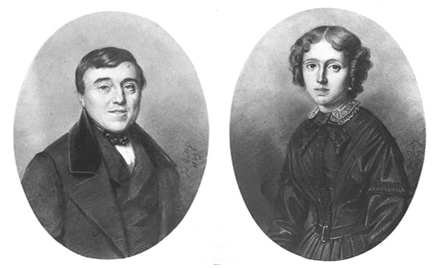
śúÄśĖį„ĀģŤ®ėšļč
 „ÉĖ„É™„Éā„āĻ„Éą„É≥Áĺ鍰®„ĀĆ„āę„ā§„ɶ„Éú„ÉÉ„Éą„Āģ„Ää„ā§„ā®„Éľ„Éę„ĀģŚĻ≥Śéü„Äč„āíśĖįśČÄŤĒĶԾ܌ĪēÁ§ļ
„ÉĖ„É™„Éā„āĻ„Éą„É≥Áĺ鍰®„ĀĆ„āę„ā§„ɶ„Éú„ÉÉ„Éą„Āģ„Ää„ā§„ā®„Éľ„Éę„ĀģŚĻ≥Śéü„Äč„āíśĖįśČÄŤĒĶԾ܌ĪēÁ§ļ
„É©„É≥„ÉĄɆŤ°®Á§ļ
- 2015ŚĻī2śúą (2)
- 2014ŚĻī12śúą (4)
- 2014ŚĻī11śúą (2)
- 2014ŚĻī5śúą (2)
- 2014ŚĻī3śúą (1)
- 2013ŚĻī12śúą (3)
- 2013ŚĻī11śúą (1)
- 2013ŚĻī10śúą (1)
- 2013ŚĻī8śúą (2)
- 2013ŚĻī3śúą (3)
- 2013ŚĻī2śúą (2)
- 2013ŚĻī1śúą (3)
- 2012ŚĻī9śúą (3)
- 2012ŚĻī4śúą (1)
- 2012ŚĻī2śúą (2)
- 2011ŚĻī10śúą (4)
- 2011ŚĻī9śúą (5)
- 2011ŚĻī8śúą (5)
- 2011ŚĻī7śúą (8)
- 2011ŚĻī4śúą (2)
- 2011ŚĻī2śúą (1)
- 2010ŚĻī12śúą (2)
- 2010ŚĻī10śúą (3)
- 2010ŚĻī9śúą (4)
- 2010ŚĻī8śúą (2)
- 2010ŚĻī7śúą (5)
- 2010ŚĻī6śúą (6)
- 2009ŚĻī11śúą (1)
- 2009ŚĻī6śúą (30)
- 2009ŚĻī3śúą (1)
- 2009ŚĻī2śúą (4)
- 2009ŚĻī1śúą (6)
- 2008ŚĻī12śúą (6)
- 2008ŚĻī11śúą (6)
- 2008ŚĻī10śúą (12)
- 2008ŚĻī9śúą (1)
- 2008ŚĻī7śúą (1)
- 2008ŚĻī6śúą (11)
- 2008ŚĻī5śúą (3)
- 2008ŚĻī3śúą (9)
- 2008ŚĻī2śúą (2)
- 2008ŚĻī1śúą (8)
- 2007ŚĻī12śúą (1)
- 2007ŚĻī11śúą (4)
- 2007ŚĻī9śúą (9)

„āĶ„ā∂„Éď„Éľ„āļ„Āģ„ÄĆ„ā§„ā®„Éľ„Éę„ĀģŤį∑„Ä据≥
„āĶ„ā∂„Éď„Éľ„āļ„Āģ„ÉĘ„É≥„āĹ„ÉľŚÖ¨Śúí„ĀģŤ®≥„ĀęÁ∂ö„ĀĄ„Ā¶„ÄĆ„ā§„ā®„Éľ„Éę„ĀģŤį∑„Äć„āíÁŅĽŤ®≥„Āó„Āü„Āß„ĀĒ„ĀĖ„āč„Äā
„Ā™„āč„ĀĽ„Ā©Ś§ßŤÉÜ„Ā™ťĘ®śôĮÁĒĽ„Ā†„Ā£„Āü„āď„Āß„Āô„Ā≠„Äā
„ĀĚ„āĆ„ĀߌćįŤĪ°śīĺŚĪē„Āę„Ā†„Āó„Āü„Āģ„Āč„Ā™„Äā
„Āď„āĆ„ĀĆ„ĀĚ„ĀģŚĹďśôā„Ā©„Āģ„ĀŹ„āČ„ĀĄŚ§ßŤÉÜ„Ā†„Ā£„Āü„Āč„Ā™„āď„Ā¶ÁŹĺšĽ£„ĀģśąĎ„ÄÖ„Āę„ĀĮ„āŹ„Āč„āČ„Ā™„ĀĄ„Āģ„ĀĮśģčŚŅĶ„Ā†„Ā™„ĀĀ„Äā
„āĶ„ā∂„Éď„Éľ„āļ„ĀģŚÖÉ„Éö„Éľ„āł„ĀĮ„Āď„Ā°„āČ >>

„ÄźÁĒĪśĚ•„ÄĎ
„ÉĎ„É™„ÄĀ„āĘ„Éľ„Éć„āĻ„ɹԾ̄ɰ„ā§„Äā1879ŚĻī„ĀęŤ≥ľŚÖ•„ÄĀ1921ŚĻī„Āĺ„ĀßśČÄśúČ„Äā
„ÉĎ„É™„ÄĀ„āĘ„É≥„ÉȄɨԾ̄ÉĘ„Éľ„É™„āĻ„Äā1955ŚĻīť†ÉŤ≥ľŚÖ•„Äā
„ÉĎ„É™„ÄĀ„Éá„É•„Éę„ā™„ÉĽ„É™„ā∑„É•„É™„É•„Éľ„Āģ„ÄĆŤŅĎšĽ£ÁĶĶÁĒĽ„Äć„Āę„Ā¶ŚÄčšļļ„ĀęŚ£≤ŚćīÔľą1991ŚĻī4śúą15śó•ÔľČ„Äā„É≠„ÉÉ„Éą„Éä„É≥„Éź„Éľ28„Äā
ŤźĹśú≠šļąśÉ≥šĺ°ś†ľÔľöÔľĄ1,000,000 – ÔľĄ1,500,000 (9ŚćÉ5ÁôĺšłáŚÜÜ„Äú1ŚĄĄ4ŚćÉšłáŚÜÜ)
Ť≤©Ś£≤šĺ°ś†ľÔľöÔľĄ1,142,500Ôľą1ŚĄĄ1ŚćÉšłáŚÜÜÔľČ
‚ÄĽśó•śú¨ŚÜÜ„ĀĮŚŹāŤÄÉ„Āß„Āô„ÄāŚ£≤ŚćīŚĹďśôā„Āģ„ɨ„Éľ„Éą„Ā®„ĀĮÁēį„Ā™„āä„Āĺ„Āô„Äā
„Äúšł≠Áē•ÔľąŚĪēÁ§ļŚĪēŤ¶ßšľö„ÄĀśĖáÁĆģԾȄÄú
„ÄźšĹúŚďĀ„Āę„Ā§„ĀĄ„Ā¶„ÄĎ
1860ŚĻī„ÄĀ„āę„ā§„ɶ„Éú„ÉÉ„Éą„ĀģÁą∂Ť¶™„ĀĮ„ÉĎ„É™„ĀģŚćóśĚĪ„Āę„Āā„āčÁ∑ĎŤĪä„Āč„Ā™śłďŤį∑„ā§„ā®„Éľ„Éę„ĀģŚúüŚúį„āíŤ≥ľŚÖ•„Āó„Āü„Äā
Ťč•„ĀĄ„āę„ā§„ɶ„Éú„ÉÉ„Éą„ĀĮ„ĀĚ„ĀģŚúįśČÄ„ĀģŚĎ®„āä„Āģ19šłĖÁīÄŚąĚť†≠ťĘ®„ĀģŚÖ¨Śúí„āĄŚźĎ„Āď„ĀÜ„ĀęŚļÉ„ĀĆ„āčšłė„ÄÖ„āí„Āô„Āź„Āęśįó„ĀęŚÖ•„Ā£„Āü„Äā
„ā§„ā®„Éľ„Éę„ĀģťĘ®śôĮ„ĀĮ„Éó„ÉÜ„ā£=„āł„É£„É≥„ÉĆ„Éī„ā£„É™„ā®„ĀģŚļ≠„Ā®ŚÖĪ„ĀęÁĒĽŚģ∂„ĀģšĹúŚďĀ„Āģšł≠„Āę„āą„ĀŹśŹŹ„Āč„āĆ„āč„āą„ĀÜ„Āę„Ā™„āč„Äā
„āę„ā§„ɶ„Éú„ÉÉ„Éą„ĀĮ„ÄĆ„ā§„ā®„Éľ„Éę„ĀģŤį∑„Äć„Āģšł≠„Āß„ÄĀŤį∑„Āģ„ÉĎ„āŅ„Éľ„É≥ŚĆĖ„Āē„āĆ„ĀüťĘ®śôĮ„ā휏Ź„ĀŹ„Āü„āĀ„Āę„ÉĎ„āĻ„ÉÜ„Éę„āíťáć„Ā≠„Āü„Äā
„Āď„ĀģÁĒĽŚģ∂„ĀģŚąĚśúü„ĀģťĘ®śôĮÁĒĽ„Āę„āą„ĀŹŤ¶č„āČ„āĆ„āč„āą„ĀÜ„ĀęŚúįŚĻ≥Á∑ö„āíťęė„ĀĄšĹćÁĹģ„ĀęśĆĀ„Ā£„Ā¶„Āć„Ā¶„ÄĀŚ§ßŤÉÜ„ĀߍŅĎšĽ£ÁöĄ„Ā™Ť°®ÁŹĺ„āí„Āô„āč„Āď„Ā®„Āß19šłĖÁīÄśúę„ĀģťĘ®śôĮÁĒĽ„Āę„Āā„āä„ĀĆ„Ā°„Ā™Ť°®ÁŹĺ„āíťĀŅ„ĀĎ„Ā¶„ĀĄ„āč„Äā
„ÉĒ„ā®„Éľ„Éę„ÉĽ„ā¶„ā£„ÉÉ„Éą„Éě„Éľ„ĀĮ„āę„ā§„ɶ„Éú„ÉÉ„Éą„Āę„Āä„ĀĎ„āč„ā§„ā®„Éľ„Éę„Āģťá捶ĀśÄß„āí„Āď„Āģ„āą„ĀÜ„ĀęŤŅį„ĀĻ„Ā¶„ĀĄ„āč„Äā
„ÄĆ„ā§„ā®„Éľ„ÉęŚ∑Ě„ĀĮ„ĀĚ„ĀģŚúįÁźÜ„Ā®ŚźćśôĮ„Āę„āą„Ā£„Ā¶„ÄĀ„ÉĘ„Éć„Āę„Ā®„Ā£„Ā¶„Āģ„ā®„Éó„Éą„āĄ„āĽ„ā∂„É≥„ÉĆ„Āę„Ā®„Ā£„Ā¶„Āģ„āĶ„É≥„Éą„ÉĽ„Éī„ā£„āĮ„Éą„ÉĮ„Éľ„Éę„Ā®ŚźĆ„Āė„ĀŹ„āČ„ĀĄ„āę„ā§„ɶ„Éú„ÉÉ„Éą„Āę„Ā®„Ā£„Ā¶ťá捶Ā„Ā™Ś†īśČÄ„Āß„Āā„Ā£„Āü„ÄāÁĒĽŚģ∂„ĀĮŤá™ŚąÜ„ĀģšłĖÁēĆ„ĀģÁŹĺŚģüśÄß„āíŤá™ŚąÜ„Āģ„Éč„Éľ„āļ„Āꌟą„āŹ„Āõ„Ā¶„ĀĄ„āč„Äā„āģ„É•„āĻ„āŅ„Éľ„Éī„ÉĽ„āę„ā§„ɶ„Éú„ÉÉ„Éą„ĀĮŤá™ŚąÜ„ĀģťĀé„ĀĒ„Āó„ĀüŚúüŚúį„ĀęśĖį„Āó„ĀŹ„ÄĀ„ā™„É™„āł„Éä„É™„ÉÜ„ā£„ĀĆ„Āā„āä„ÄĀ„ĀĚ„Āó„Ā¶ŚÖ®„ĀŹŚÄčšļļÁöĄ„Ā™ŚĀīťĚĘ„āíšłé„Āą„Āü„Āģ„Ā†„ÄāÁĒįŤąé„ĀģÁĒüśīĽ„ĀĮ„ĀĚ„ĀģśįłÁ∂öÁöĄ„ĀęÁĻį„āäŤŅĒ„Āē„āĆ„ÄĀ„ĀĚ„Āó„Ā¶Śłł„ĀęťĀé„Āé„āÜ„ĀŹśó•„ÄÖ„āĄŚõõŚ≠£„Āģ„É™„āļ„Ɇ„ā휥ü„Āė„Āē„Āõ„āčŤá™ÁĄ∂„āíśÄĚ„ĀĄŤĶ∑„Āď„Āē„Āõ„āč„Äā (P. Wittmer, op. cit., p. 28).„Äć
„ÄĆ„ā§„ā®„Éľ„Éę„ĀģŤį∑„Äć„ĀĮ1879ŚĻī„ĀģÁ¨¨4ŚõěŚćįŤĪ°śīĺŚĪē„ĀęŚáļŚĪē„Āē„āĆ„Āĺ„Āó„Āü„ÄāťĖčŚā¨Ś†īśČÄ„ĀĮ„ā™„Éö„É©ťÄö„āä28Áē™Śúį„Āß„ÄĀ„āę„ā§„ɶ„Éú„ÉÉ„Éą„ÄĀ„ÉČ„ā¨„ÄĀ„ÉĘ„Éć„ÄĀ„ÉĒ„āĶ„É≠„Ā®„ĀĄ„Ā£„ĀüÁ訌ČĶśÄß„ĀęŚĮĆ„āď„Ā†šĹúŚďĀ„ĀĆŚáļ„Āē„āĆ„Āü„Äā„āę„ā§„ɶ„Éú„ÉÉ„Éą„ĀĮÁ¨¨4ŚõěŚćįŤĪ°śīĺŚĪē„ĀģÁĶĄÁĻĒ„Āģťá捶Ā„Ā™ŚĹĻŚČ≤„āíśčÖ„Ā£„Ā¶„ĀĄ„Āü„Äā
Ernest May, Paris (acquired by 1879 and until 1921)
André Maurice, Paris (acquired circa 1955)
Sale: Drouot Richelieu, Paris, Tableaux modernes, April 15, 1991, lot 28
Private Collection (acquired at the above sale)
„ÄźExhibited„ÄĎ
Paris, La 4e Exposition de peinture, 1879, no. 28
Paris, Salon d’Automne, Caillebotte: Exposition retrospective, 1921, no. 2743
„ÄźLiterature„ÄĎ
Marie Berhaut, Gustave Caillebotte, Paris, 1951, no. 81 (as dating from 1878)
Marie Berhaut, Caillebotte, sa vie et son oeuvre: Catalogue raisonné des peintures et pastels, Paris, 1978, no. 99, illustrated p. 116
Sophie Monneret, Impressionnisme et son époque, vol. III, Paris, 1980, listed p. 151
Pierre Wittmer, Caillebotte and His Garden at Yerres, New York, 1991, listed p. 308
Marie Berhaut, Gustave Caillebotte: Catalogue raisonné des peintures et pastels, Paris, 1994, no. 92, illustrated p. 107
Eric Darragon, Caillebotte, Paris, 1994, illustrated pp. 16-17
Ruth Berson, ed., The New Painting. Impressionism, 1874-1886: Documentation, vol. 2, San Francisco, 1996, no. IV-28, illustrated p. 125
Gustave Caillebotte: The Unknown Impressionist (exhibition catalogue), London, Royal Academy of Arts, listed p. 210
Pierre Sanchez, Dictionnaire du Salon d’Automne: répertoire des exposants et liste des oeuvres presentées, 1903-1945, vol 1, Dijon, 2006, listed p. 271
„ÄźCatalogue Note„ÄĎ
In 1860, Caillebotte’s father acquired a property in Yerres, a verdant river valley southeast of Paris. The young Caillebotte was instantly taken with the early nineteenth century gardens around the estate and the expanse of rolling hills that extended beyond. The landscape at Yerres, along with the gardens at Petit Gennevilliers, would figure prominently in the artist’s oeuvre. In La Vallée de l’Yerres, Caillebotte layers rich pastels to convey the patterned landscape of the valley. With a high horizon line, characteristic of many of the artist’s early landscapes, Caillebotte eschews the common expectations of landscape painting at the end of the nineteenth century with a boldly modern gesture.
Pierre Wittmer writes of the significance which Yerres held for Caillebotte, “The Yerres river – thanks to its location and scenic attraction… – was as important to Gustave Caillebotte as the Epte was to Claude Monet or Mont Saint-Victoire was to Paul Cézanne. The artist adapts the reality of his world to his needs. Gustave Caillebotte gave the sites in which he lived a new and original and wholly personal dimension. His rendering of rural life evokes its perennial and cyclic nature, always leaving us with a sense of the rhythm of passing days and seasons” (P. Wittmer, op. cit., p. 28).
La Vallée de l’Yerres was included in the fourth group exhibition which the Impressionists mounted in 1879. The exhibition took place at 28 avenue de l’Opera and included seminal works by Caillebotte, Degas, Monet and Pissarro. Caillebotte himself assumed an important role in organizing this fourth Impressionist group exhibition.
Ôľąquoted from Sotheby’sÔľČ
Comment
No comments yet.

